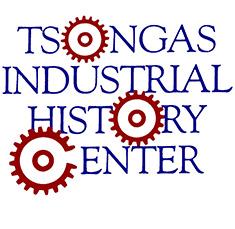Below are links to the collections of documents for the suggested activities. In addition to using these documents as we have suggested, feel free to use them in your own lessons about the history and significance of early industrial America, and in activities that introduce or reinforce historical thinking skills.
| Mill Life | Boardinghouse Life |
|---|---|
|
|
| Family Life | City Life |
|
|
Types of Documents in the Collection
Family Lineage The family lineage sheet is based on the Taylor family genealogy.
Letters Letters are wonderful documents because they were never intended for public consumption and provide commentary on the everyday lives of literate people. One difficulty with reading letters from another era is that terms and colloquialisms may differ from one's own. In addition, when working with original documents, it is often hard to read handwriting that may never have been neat and is now torn and faded.
There is both an original and a transcript.
Receipts Receipts provide valuable information about the cost of goods and services, and the types of transactions in which people engage. In addition, much can be inferred about the people involved in the transactions.
1850 Industrial, Agricultural and Social Census The U.S. Census has been taken every ten years since 1790. The census lists the name, age, occupation and sex of the occupants of every house. The Industrial, Agricultural, and Social Census provides information on industrial, agricultural, and social service activities. This census shows Stephen Burleigh Taylor's (Barilla’s father) agricultural holdings, and provides insight into the Taylor's lifestyle.
Newspaper Articles Newspaper articles are written for public consumption and can sometimes be biased.
City Directory Many New England towns have directories dating back to the 19th century. The city directory lists the names, addresses, and occupations of people who were “caught at home. In addition, directories include paid advertisements; information on banks, services, churches, and schools; the names of elected officials, and population statistics.
Advertisements Nineteenth-century advertisements for Lowell shops and businesses were distributed throughout the country and abroad. Such ads promoted goods, services, and the city itself.
Corporate Regulations To get a job in a factory, Lowell workers were required to read the company regulations, then sign the back to signify their willingness to abide by company rules. Workers living in company boardinghouses went through a similar process. The back of the Hamilton Company Regulations includes Barilla's signature, the date of her hiring, and her specific place of work (UWC - Upper Weave Room C).
1853 Time Table for the Lowell Mills Each corporation in Lowell posted a work schedule. The time table provides information on seasonal work schedules and breaks for meals.
Hamilton Company Payroll Records Barilla worked at the Hamilton Manufacturing Company. The Hamilton Company Records contain information on payroll, rent, capital, manufacturing expenses, machinery, and official correspondence.
Corporation Hospital Records Hospital Records are not always easy to access. The Lowell Corporation Hospital Records refer to Ann Graham, a worker to whom Barilla refers in her letter home. They will find:
- Ann Graham's full name;
- the number of people admitted to the hospital before Ann Graham;
- her admission and release dates,
- her place of employ;
- the nature of her injury;
- the cost of her treatment; and
- the status of her health upon release.
In addition, by looking at other entries on the page, students will get a sense of other accidents, illnesses, and lengths of stay.
Lowell Vital Records to 1850 Many cities in Massachusetts have bound vital records for the first half of the 19th century. More recent birth, marriage, and death records are usually kept at City Hall.
Lithographs Prior to the advent of photography, lithography (a printing process that uses a flat stone or metal plate on which the image areas are worked using a greasy substance so that the ink will adhere to them, while the non-image areas are made ink-repellent) was a common technique for the mass distribution of images.
